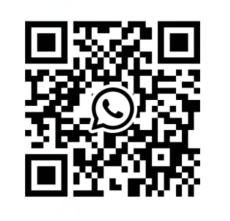Why does the library use RFID technology?
Aug 20, 2018
With the popularization of library management information, how to realize the intelligent and reliable borrowing of books, rapid inventory, search, and organized books, has always been a bottleneck restricting the development of the library management industry. RFID technology is applied to libraries to identify, track and protect library materials through RFID technology and products, to realize the borrowing, shun, search and inventory of books and materials, and to greatly improve the processing of library materials. effectiveness. Thereby, the intelligent level of the book management method is greatly improved, the work efficiency is improved, the labor intensity of the library management personnel is reduced, and the library information management is brought about a revolutionary improvement.
In the 1990s, RFID technology and products began to be widely used in library management around the world. In 1998, the North American Library proposed to use the RFID technology solution as a way for readers to self-service, and then the Rockefeller University Library in New York first installed the RFID system. In 1999, the Farmington Community Library in Michigan became the first public library to use the technology. In 2002, the National Library of Singapore released the first comprehensive library management system for RFID in Asia, which was the first to introduce high-frequency (HF) RFID technology into the library. After using RFID technology, the library borrowing rate has increased by 30 times, the number of staff has decreased by 2,000, and the annual savings of 28 million US dollars have achieved remarkable results in improving management efficiency and improving service levels.
Early foreign libraries mainstreamed high-frequency RFID solutions. Up to 99% of high-frequency RFID technology is used in libraries in Europe and the United States. The National Library of Singapore is one of the early and widely used libraries using high-frequency RFID technology. The library began testing the application of RFID in library circulation, sorting and logistics systems in 1998 and was comprehensive in 2002. Completed and put into operation. Since then, with the increasing maturity and improvement of RFID manufacturers' solutions for library applications, foreign libraries have begun to plan and implement RFID technology and products. The ParkGrove Bookstore in Minnesota, the OglethorpeMall Bookstore in Georgia, and the GailBorden Public Library in Illinois introduce high-frequency smart return books and sorting systems to provide a full range of self-service; Max Planck Europe The Library of Legal History Institute uses a high-frequency RFID tag system with a lifetime of 40 years to manage historical documents; the Australian Regina Regional Library pilots high-frequency RFID at the Wagga City branch and expands it to 10 branches.
The development of RFID in domestic libraries is also very rapid. Since the implementation of RFID technology by the Chengyi College Library of Jimei University in Xiamen in 2006, the number of libraries using this technology has increased year by year. In October 2006, the new library of Shenzhen Library introduced foreign high-frequency RFID technology, becoming the first public library in China to fully use high-frequency RFID tags, opening up a new situation of RFID in Chinese libraries. In September 2008, the National Library Phase II and the National Digital Library were officially opened to receive readers. The new library introduced RFID technology and integrated traditional services with digital services, marking the beginning of universal adoption of RFID technology in China. Since then, in addition to national, provincial and municipal public libraries, some university libraries and some small public libraries have begun to use RFID technology to manage books.
All this shows that the library has reached a consensus on the use of RFID technology to achieve intelligent library management. In order to better serve the majority of book lovers, it is imperative to improve the efficiency of book management through RFID.
Any other rfid tag requirement,welcome to contact:Meihe rfid factory,www.rfidcardfactory.com .Email:sales@mhgyjs.com
Read More

